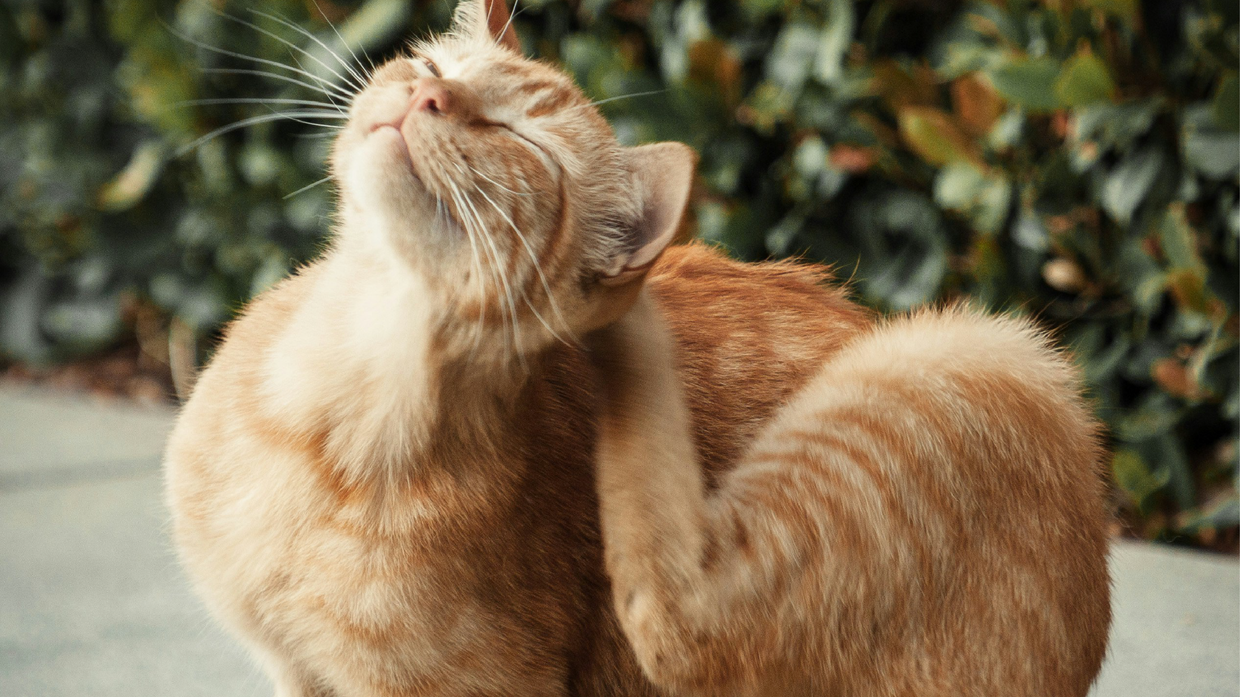Say Goodbye to Fleas: A Complete Guide for Cat Owners
Fleas are one of the most common parasites in cats — even more so than in dogs. If your feline friend can’t stop scratching, there’s a good chance fleas are to blame. The good news? Getting rid of fleas isn’t complicated. It does, however, take the right products, consistent prevention, and a little patience.
How do cats get fleas?
Cats pick up fleas in many of the same ways dogs do, but indoor–outdoor cats are at the highest risk. Fleas thrive in warm, hidden environments, so understanding how they spread is the first step in stopping them.
Common sources include:
- Encounters with wildlife or stray cats outdoors
- Other household pets (dogs, rabbits, or even visiting animals)
- Flea-friendly indoor spaces like carpets, furniture, or bedding
Signs your cat has fleas
The most reliable way to detect fleas is by checking your cat’s coat and skin. Fleas are small, dark brown or black, and about the size of a grain of rice. But even if you don’t spot them, your cat’s behaviour can give you clues.
Watch for:
- Flea dirt (tiny black specks through the fur)
- Scratching or biting at the skin
- Excessive licking of certain areas
- Restlessness or constant shifting around
- Head shaking indicating irritation
- Hair loss linked to persistent itching
Flea treatment and prevention options
Plenty of over-the-counter treatments are available to kill fleas, including spot-on treatments, tablets, chews, and collars. But the real key is consistency: applying a monthly preventative ensures fleas don’t come back.
Step 1: Wash and remove existing fleas
Before applying treatment, bathe your cat with a flea shampoo (if your cat tolerates baths!) and comb out any visible fleas or eggs.
Step 2: Apply flea treatment
Once clean, administer your chosen flea control product to kill any remaining parasites. Always follow the instructions and dosage guidelines carefully.
Breaking the flea cycle
Here’s the tricky part: adult fleas on your cat are only a tiny fraction of the problem. Around 95% of fleas exist as eggs, larvae, or pupae in the environment. That means you must treat both your cat and your home.
The flea lifecycle:
- Eggs are laid on your cat and fall into the environment
- Larvae hatch and feed on organic debris
- Pupae develop in protective cocoons
- Adult fleas emerge to start the cycle again
Left unchecked, fleas can infest a home in just weeks.
How to deep-clean your home
To stop fleas for good, you’ll need to tackle your cat’s environment as well:
- Wash bedding in hot water: Anything your cat sleeps on should be washed regularly. Use hot water (laundromat machines are great if your home washer can’t reach high temps). Don’t forget human bedding, couches, or blankets your cat curls up on.
- Vacuum thoroughly: Carpets, rugs, furniture, and crevices are flea hotspots. Vacuum daily during an infestation, then regularly afterwards.
- Use flea sprays if needed: Pet-safe sprays and insecticides can add extra protection on bedding and fabric surfaces.
- Call in professionals: In severe infestations, pest control may be the fastest and most effective solution.
Getting rid of fleas on cats means tackling both the pet and the environment. With a consistent monthly treatment plan and a thorough home clean, you can break the flea cycle and keep your cat itch-free.
Recent Posts
-
Say Goodbye to Fleas: A Complete Guide for Cat Owners
Fleas are one of the most common parasites in cats — even more so than in dogs. If your feline frien
-
Parasite Protection for Dogs: The Dos and Don’ts Every Pet Owner Should Know
Parasites are more common — and more resilient — than many pet owners realise. From fleas and ticks
-
Get your Puppy to Sleep Through the Night
Bringing a new puppy into your home is an exciting experience, but it can also come with sleepless n




